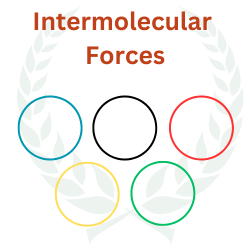
Intermolecular forces are responsible for holding various molecules and ions close to each other. Their attractive strength is significant enough to affect various physical, chemical, and biological properties.
In this chapter, we extensively cover the most potent intermolecular forces in organic chemistry - Ion-dipole, Ion-induced dipole, Vander Waals forces (Debye, Keesom, and London), and Hydrogen bonding interactions.
Chapter Intermolecular Forces Cover
- Ion-Dipole Interactions-Introduction and Occurrence
- Factors Affecting the Ion-Dipole Strength
- Importance of Ion-Dipole Interactions
- Ion-Induced Dipole- Introduction, Strength and Occurrence
- Factors Affecting the Strength of Ion-Induced Dipole Interactions
- Ion-Induce Dipole Interactions in Polar Molecules
- Vander Waals Forces -Introduction
- Examples of Vander Waals' forces
- Vander Waals Debye (Polar-Nonpolar) Interactions
- Factors affecting the Strength of Debye Forces
- Vander Waals Keesom Force- Introduction, Occurrence and Strength
- Vander Waals London Forces- Introduction, Occurrence, And Importance
- Factors Affecting the Strength of London Dispersion Forces- Atomic size and Shape
- Introduction, Occurrence and Donor, Acceptors of Hydrogen Bond
- Hydrogen bond Strength, Significance and Types
- Factors Affecting Hydrogen Bond Strength
- Impact of Hydrogen bonding on Physical Properties- Melting and boiling point, Solubility, and State
- Calculation of the Number of Hydrogen Bonds and Hydrogen bond Detection